Atmosphere and Architecture:
A reflection on the design of atmosphere and how it is perceived in contemporary architecture
by: Megan Smylie

[abstract]
Atmos [vapour] | sphaira [sphere]
In this essay on atmosphere in architecture we will look at atmosphere as two-fold. On one hand, as the physical particles that make up the air of a place; on the other hand, as the character or aura which surrounds and defines a place. Walter Benjamin in his 1935 essay “The Work of Art in the Age of Mechanical Reproduction” argues that the aura of a work of art is unique to its “presence in time and place”. While Peter Zumthor in his 2003 lecture on “Atmospheres” describes it as a timeless culmination of visual qualities embedded in a design. What is critical in both discourses is that the perceived atmosphere of a place is deeply connected to the time-specific context (its place in history) of the experience itself, not to mention the state or mood of the visitor themselves. This could be related to historical events, popular culture, physical surroundings. Atmosphere is a “continuous propagation” of time, space and user. Often the atmosphere is a particular outcome of the context of its realisation/creation that can lose its relevance in new scenarios (similar to that of artworks that have been mechanically reproduced – a parallel explored by Walter Benjamin). New technologies however, are being integrated into buildings and pavilions themselves to overcome this time-sensitive atmospheric estrangement. They regenerate their own atmosphere according to the real-time interactions of environmental conditions and human behaviour. What is particularly poignant about this technological shift is its impact on the way we perceive atmosphere – shifting from a predominantly “optic”, contemplative, metaphorical experience of architecture to a “haptic” , immersive, sensational experience of architecture.
[chapter one: metaphorical atmosphere]
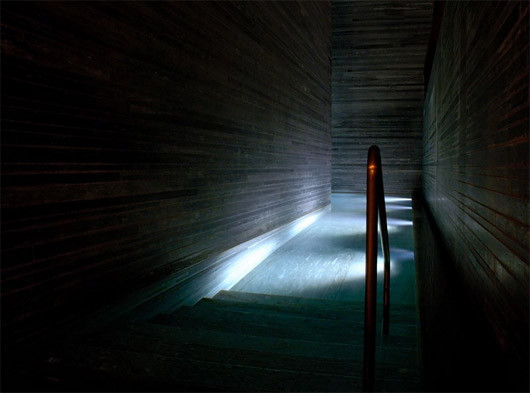
Peter Zumthor describes architectural atmosphere as an intensity of feeling or mood invoked by the physical characteristics of a space, and according to his own career-long pursuit of creating “moving” atmospheres with his architecture, he summarises the atmosphere of a place is a culmination of it’s “noises, colours, material presences, textures” and most of all, its form. These design qualities can imply temperature, create tension between in and outside, intimacy or movement. He speaks about his Vals Thermal Baths project in reference to these intensities in atmosphere which encourage the visitor to either dwell in or transition between spaces at a desired pace for relaxation; “composure and seduction”. Likewise, Steven Holl is also another architect who designs qualities into his projects which intend to move the users both physically and metaphorically, with his alluring curved passages, intertwined spaces and light play. The bold geometries, dramatic proportions and overall striking forms of Herzog & De Meuron inspire awe and contemplation. In this sense, atmosphere is an “aesthetic category”, where the qualities that we visually perceive influence our experience of a space. Walter Benjamin calls this “optic vision”, and suggests that we contemplate these buildings as we would contemplate a work of art – an object of concentration, existing within a certain sphere of influence, relating intimately to its surrounding context, as well as to the visitor’s [condition/circumstance/mindset], and exudes a certain “aura” according to this context. I will elaborate on this parallel drawn by Eugenio Pandolfini between the way we perceive art and architecture in a contemporary context later in this essay. But firstly, we must explore the alternative interpretation of atmosphere, as outlined in the introduction.
[chapter two: operative atmosphere]

According to Cambridge Dictionary atmosphere is “the air that you breathe in a place”; that is the gaseous substances that fill a space. For architects such as Philip Rahm or Diller + Scofidio atmosphere in this way is not just a side-effect our outcome of their designs, but is in fact a critical design tool and building material respectively in the creation of their projects. Rahm’s design solutions are carefully formed to compliment and optimise the passive behaviour of the local climatic conditions, such a temperature, humidity, gas concentrations and much more. For the World Expo of 2002 Diller + Scofidio exhibited the Blur Building whose form/materiality/mass was essentially an undulating, fluctuating density of fog, appearing to float above a Lake. This fog is “a materialisation of the flows of data” related to local weather conditions. NOX’s Fresh Water Pavilion, 1997 took visitors through a multi-media simulated waterscape, within which the projections, lights and sounds changed in direct response to visitors movements and numbers. The atmosphere thus becomes performative, and the visitor or environmental conditions are no longer just a passive, distant observer but play a direct role in its formulation. As the viewer moves through the atmosphere, their vision transforms from an “optic” experience, to a “haptic vision” – a term Walter Benjamin uses to describe the more sensational, immersive, close range experience of this contemporary construct of atmosphere architecture. It is largely thanks to emerging technologies [such as sensors, arduino’s, parametric design software] that allow this real-time feedback from user and environment to performative atmosphere and architecture.
[chapter three: the social impact of technology on art, culture and architecture]
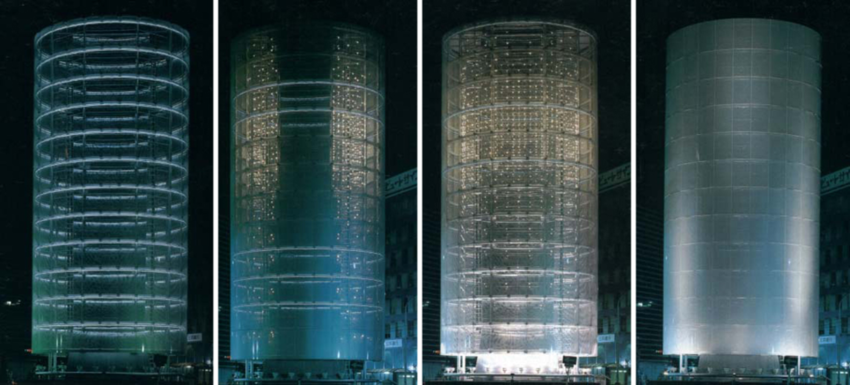
Eugenio Pandolfini – in light of Walter Benjamin’s essay on the impact of modern media communication on works of art – reflects on how new technologies in media communication and in interactive design have led us to this desire(need?) for fast changing, dynamic environments – just as the flooding of imagery introduced by film/tv screens changed the way in which we absorb and process information. These new methods of sharing information to the masses have also infiltrated the urban landscape – for example, Time Square with its walls filled with video screens. We have been exposed to data about our environment for a long time – such as air quality levels, noise levels, surveillance – however only recently has architectural technology started to convert this data into real-time performance. We see a progression from Toyo Ito’s Wind Tower 1986 (which converts information about the wind into responsive light design), to Renzo Piano’s KPN telecom tower 2002 (which converts imagesin low resolution to screens/pixels across its facade) to the 2010 Media-TIC building by Cloud 9 in Barcelona.
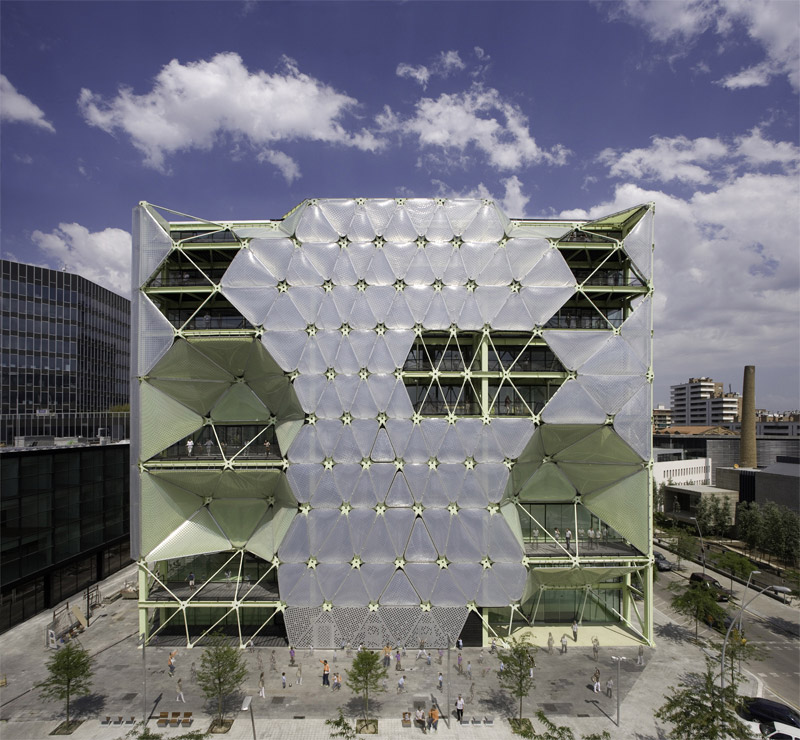
The Media-TIC incorporates a dispersed sensor network which locally reads heat gain and mechanically adjusts its facade skin to protect the interior from the powerful mediterranean summer sun. The inundation of predominantly visual communication and information exchange that evades all areas of our lives seems to have led to a contemporary desire for satisfaction by way of saturating the other senses, and reawakening the bodies interaction with its physical surroundings such as with the Fresh Water Pavilion or Blur Building. The subsequent intimate relationship between user, time and space results in a unique experience of the atmosphere of a space for each visitor, every time.
[chapter four: decay and rebirth || propagation of atmospheres]
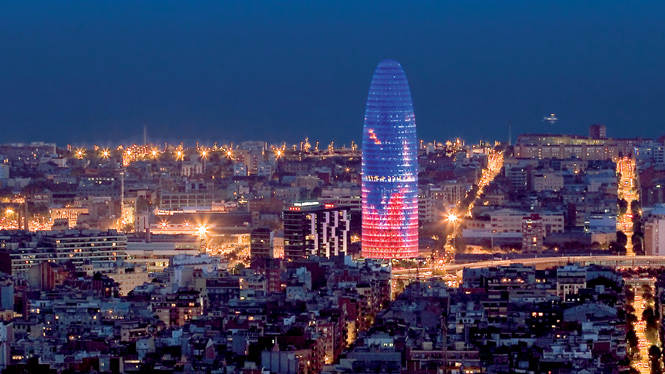
Benjamin reflects on how initially, the ability to reproduce images (specifically of artworks) in any context or environment or space worldwide conflicted with the concept of original works exuding a unique atmosphere founded in their born context, and thus each reproduction of the same leads to a “decay in aura”. We could reason that the same is true of architecture, which was born of a certain historical time to satisfy a specific social need ( such as the Modernist Housing Blocks of the 1960’s and 70’s). Although the ideal behind the minimalist design and low-cost of these apartments was strong in logical, their over-reproduction led to their demise as they became a symbol of social division and conformity and physical decay. It can be argued that it is not in fact specifically its reproduction that leads to its ultimate failure or decay in aura, but the lack of adaptability in its design or loss of relevance in the contemporary context. Pop Art was an entire movement based on the re-appropriation and re-contextualisation/reinterpretation of objects and images. “Screen buildings” like the Barcelona Bullet tower by Jean Nouvel can essentially be hacked for certain events, redesigning the light display to compliment the relevant season or festival. The Schouwburgplein plaza in Rotterdam was injected with a flexible program and semi-adaptable structures in 1996, by West 8 in an attempt to revive the under-utilised urban space that was once in war times the central place for congregation and communication via speech. What we can deduct from this comparison between art and architecture is that in order for the aura of an object or place to endure across time, it should be in continuous dialogue with its immediate context. In this way, the atmosphere it generates is continuously renewed and unique to each visitor and/or each moment. Worth mentioning is how responsive, adaptive atmospheres can contribute to regenerating healthier environments when dealing with the physical particles in the air. As we become more socially aware of the impact of air quality on our wellbeing, the atmospheric architectures emerging such as from the Francois Roche studio and Philip Rahm become more and more relevant.
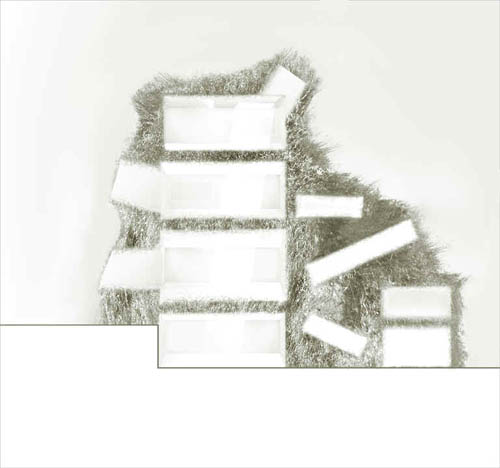
[Conclusion]
In modern times, the proliferation of social media and communications has contributed to the masses’ heightened awareness of the psychological and physiological impact of atmosphere on city dwellers. At last, we are witnessing emerging technologies in interaction and data processing becoming design tools to create architectural atmospheres that are responsive to their environment (both physical and cultural). While the visual impact of metaphorical atmosphere still remains an important consideration in traditional design practice, with the power to psychologically transform a space and effect the mood of the visitor, the potential of redesigning and regenerating physical atmosphere opens an exciting realm of responsibility for architecture to transform the city scape beyond its traditional, formal sphere of building – to communicate, transform, adapt to the ever-changing contemporary, environments we live in – to reawaken the role of the body in sensibly and sensitively perceiving and consciously immersing in and contributing to the atmosphere.
[Bibliography]
Dispersed Perception
Architecture and tactility in the society of communication
Doctoral Thesis, Eugenio Pandolfini, 2014
Atmospheres
Architectural Environments – Surrounding objects
Lecture, Peter Zumthor 2003
The Work of Art in the Age of Mechanical Reproduction
Essay, Walter Benjamin, 1935
[Images]
Figure 1: There Vals, Peter Zumthor,
Source:
https://www.archdaily.com/13358/the-therme-vals
Figure 2: Evaporated Rooms, Philip Rahm,
Source:
http://www.philipperahm.com/data/projects/evaporatedrooms/index.html
Figure 3: Tower of Wind, Toyo Ito,
Source:
https://www.researchgate.net/publication/257458259_Giving_form_to_computational_things_Developing_a_practice_of_interaction_design
Figure 4: Media-TIC, Cloud 9,
Source:
https://www.ruiz-geli.com/projects/built/media-tic
Figure 5: Torre Glories, Jean Nouvel,
Source:
https://www.barcelonaturisme.com/wv3/en/page/517/torre-agbar.html
Figure 6: Dusty Relief, Francois Roche,
Source:
https://www.new-territories.com/roche2002bis.htm